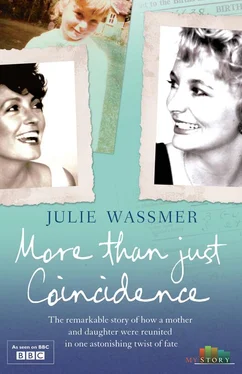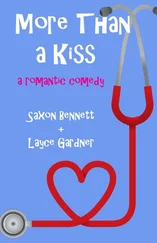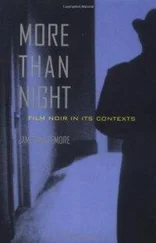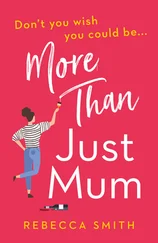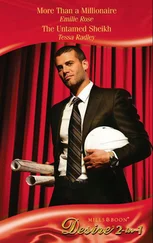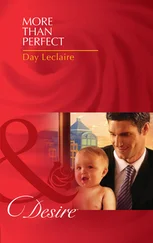When the bursary came through my mum and I travelled up to the City to buy my uniform, which could only be purchased from Gamage’s department store at 116—128 Holborn. Once known as the people’s popular emporium, Gamage’s no longer exists—it closed its doors in the 1970s—but at one time it had been among London’s best-known stores. It had sold everything from picnic baskets to magic tricks to motoring accessories, as well as boasting an international shipping service that had, in its glory days, dispatched goods ‘throughout the empire’. Much loved by small boys for its seemingly endless array of model trains, aeroplanes, bicycles and ‘scholar’s microscopes’, it had become the official supplier of uniforms to the Boy Scout movement. In 1964, it also stocked every item on the exhaustive list we had received from the Central Foundation School for Girls, or CFS, as it was known.
In the girlswear department, a smart, well-spoken lady hurried across to attend to us. I sensed my mother’s unease. Perhaps she would have been happier if the tables had been turned and she had been serving this woman a cup of coffee in her Kardomah overall. She reacted by adopting a new voice for the afternoon, one more fitting to her new station as respected customer.
We handed our list to the assistant, who led us to various rails and stacked shelves, selecting bottle-green gymslips and skirts, green-and-red-striped ties, gingham summer dresses, starched white shirts and sports gear suitable for hockey and something called lacrosse. I stepped out of changing cubicles looking, and feeling, uncomfortable in stiff-collared blouses. My mother checked the price of each item. It was all shockingly expensive. Stunned by the mounting subtotal, she started to panic, insisting on large sizes I could grow into, until the sales assistant reminded her as tactfully as she could that since the bursary paid for a full six years there was no need to economise. I heaved a sigh of relief. I had no intention of starting a new school swamped in voluminous skirts when the mini was all the rage.
We stepped out into sunshine, laden with bags. The Kardomah coffee house was only a few bus stops along the road and my mum couldn’t resist dropping in so the Saturday waitresses could see where we had been. ‘Julie’s grammar school uniform,’ she said proudly, raising a Gamage’s bag.
There was more to be done when we got the uniform home. Every item had to have its own name tag. My mother considered the instruction ruefully, then went out to the market and bought iron-on labels. Life was too short for a working woman to sew.
Seven years before, the prime minister, Harold Macmillan, had told us all we ‘had never had it so good’, but in the East End, at least, we were only just beginning to agree with him. By 1964, ‘Live now, pay later’ was the slogan of the day. No one seemed to fear hirepurchase agreements any more and labour-saving goods were at the top of every shopping list. My mother now flicked through catalogues to make her purchases. Tupperware was the latest thing, and she invested in lunchboxes and drinks containers that I could take with me to school. At long last we got our first fridge, powered by gas, and the milk came in from its saucepan of cold water on the window ledge. While I experimented with fruit-cordial ice cubes my mum, who had never been much of a one for shopping or cooking and had at last been emancipated by a threestar ice compartment, embraced the new frozen-food options with enthusiasm. Out went the old staples of corned beef, spam and tinned ravioli and in came exotic convenience meals like fish fingers and crinkle-cut chips.
The flat itself, though, was deteriorating further. The roof had sprung more leaks, a paisley patch of damp was spreading out across the bedroom ceiling and there was even more subsidence in the living room. Uncle Will had brought home a cute mongrel puppy he christened Judy and in the summer holidays I escaped most days to walk her in Victoria Park and teach her tricks. Or I would go to the local Odeon for an hour or so to be whisked off to considerably more glamorous locations a galaxy away from Mile End: Istanbul in the to-catch-a-thief caper Topkapi, or the beautiful American mansion, with its stables and horses, to which handsome Sean Connery brings ice-cool Tippi Hedren in Hitchcock’s Marnie.
At home I shut myself off from whatever was going on around me and worked on my Olivetti typewriter, which my mother had bought me for my birthday six months earlier. It came with a smart grey case containing a neat pouch where I could store pens, paper and envelopes. I loved every task associated with it, no matter how small—changing the ribbon, feeding in the paper, snapping down the bar to keep it in place—just like those men who are never happier than when they are tinkering with their cars. When I was ready I would position my hands above the keys like a concert pianist before allowing my two forefingers to dance across them, impressing on the paper poems and stories set in places I had only ever read about or seen at the cinema: Mediterranean islands like Rhodes, home to the Colossus, and beautiful Capri, where the emperor Tiberius had thrown his enemies off a high cliff.
By the autumn the Macmillan government, still reeling from the Profumo affair, was listing as badly as 25 Lefevre Road. My father was now confident that a Labour prime minister would soon be in power and the class barriers would come crashing down.
The seeds of such a revolution had already been sown. In what seemed like a strange reversal of the natural order, Terence Stamp, Michael Caine, the Beatles and Peter Sellers, working-class heroes all, were mixing with the likes of Princess Margaret and Lord Snowdon. London in the 1960s has been described as the place where our modern world began and we were seeing the emergence of a new meritocracy, where talent mattered more than who your parents were. One of its first stars was the photographer David Bailey, born in Leytonstone, while the East End’s own Vidal Sassoon, who had given the fashion supremo Mary Quant her iconic bob cut, was famous all over the world.
Throughout the summer a pristine satchel has been sitting permanently by the door, filled with blank notebooks: the unwritten story of my career at the Central Foundation School for Girls. On 14 September 1964 I put on my new uniform, slip the strap of the satchel across my shoulder and set off for the bus stop.
The stiff white blouse puffs up out of the loose waistband of my skirt as I raise my arm to hail the number 8. Unsure how I should wear my beret, I’ve tried it several ways: at jaunty French angles, like a workman’s cap and, lastly, drawn down at the back like a snood. I catch sight of my reflection in the bus window as I jump on board. The beret looks like a flat, green dinner plate perched on my head. Climbing the stairs to the upper deck, I spot an empty seat but before I can reach it I am pounced upon by a swarm of older girls, all wearing the same bottle-green uniform as mine.
Panicked, I fall to the floor and a scuffle breaks out. I’m kicking and struggling but someone grabs my beret and when I eventually manage to break free it is tossed back at me. I see that its stalk is missing.
‘You’ve been bobbled!’ they scream, clattering down the stairs, cackling.
A third of the pupils at my new school are Jewish, most of whom live in Stepney and Whitechapel. Many are from families that fled Poland and Germany in the late 1930s and 1940s and have relatives who survived concentration camps. They have dark hair and strange names like Bobravitch and Baruch. The only two ‘foreigners’ I have ever known before are Mrs LeWars and a boy called Remo Randolfi whose family run a café and ice-cream parlour in Roman Road. Now I am about to become ‘foreign’ myself, albeit only for half an hour, when I am wrongly seated on the kosher lunch table, perhaps because I, too, am dark-haired and have an odd surname.
Читать дальше
